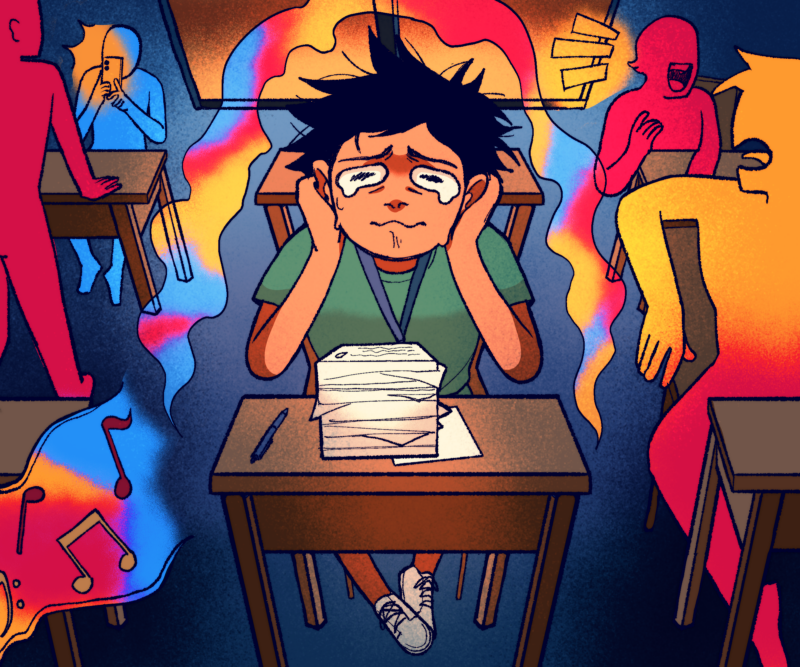Manileños woke up on the morning of September 26, 2009 to the sound of rain—typical, it seemed to everyone. Typhoons are, after all, part and parcel of daily life in a tropical country like the Philippines. After some time, though, Manila’s denizens started grappling with a scary realization—the rains just wouldn’t stop!
And so the people, not knowing what to make of the emerging deluge, stood helpless as they witnessed the undoing of their city: roads transformed into rivers, the eastern valley into a sea.
Only at the end of it all, when the rains had ceased and the floods had receded, did the people witness the grand scale of the tragedy that beset them. On the streets the morning after were grim reminders of the freakish typhoon: dead people, debris, mud.
What went wrong? The usual warnings and forecasts were issued just as before, but no one, it seemed, was ready for Ondoy’s onslaught, not even the government institutions designed to be the instruments for averting such catastrophes.
Nevertheless, it was the worst of times that brought out the best in everyone: the people swung into action. Relief centers were overflowing with donated goods, and rescue operations were rife with volunteers.
The people’s response in the wake of Ondoy undoubtedly hastened the country’s recovery. The hungry were fed, the stranded were rescued, and the homeless were accommodated—the immediate concerns were all tended to. But now that the debris have broken down to dust, the time is much riper for communal reflection. How far, indeed, has Juan gone since Ondoy?
The view from home
The effects of Ondoy were profoundly felt in the Ateneo. For a full week, when all classes were cancelled, the entire campus was abuzz with passionate rhetoric for help and donations. The covered courts became the central operations center of Ateneo Task Force Ondoy, and the venue where then Vice President for the Loyola Schools Assunta Cuyegkeng historically announced the cancellation of final exams to pave the way for greater community involvement in the recovery efforts.
Asked about the spirit of volunteerism that took hold of Ateneo and the rest of the nation following Ondoy, Sociology Professor Czarina Medina points to the notion of kapwa as a driving force.
“Ondoy served as a catalyst for us to make the need of others real and close,” she says, explaining how Ondoy motivated Ateneans to share in the suffering of the victims, including other Ateneans, by helping out.
“For Ateneans, I think kapwa was such a vague concept,” Medina says. “We understand it deep inside because it’s cultural, but it had no face. Ondoy provided that face of the kapwa because it was so near.”
Medina explains that kapwa is a notion of the Filipino psyche which assumes that as one experiences, the other also experiences, and that this reality makes everyone equal. Medina believes it was this sense of kapwa that stood out in the community’s efforts following Ondoy.
She acknowledges, though, that not everyone had the sincerest of motivations to help out. “The influence of your peers and your family are actually motivating factors,” she says. “Those people who are likely to volunteer are also those who belong to peer groups, families, or organizations who have a tendency to volunteer.”
Forecasting woes
Following massive death and destruction in the affected areas, people found reason to blame the concerned government agencies. The country’s official weather institution, the Philippine Atmospheric, Geophysical and Astronomical Services Administration (PAGASA), received the most flak for not accurately forecasting Ondoy’s rainfall.
Although the agency had the capability to measure the wind speeds of storms and classify them accordingly, they lacked a very important apparatus: the Doppler Radar, which measures the rain content of storms.
Following these criticisms, PAGASA has pursued some improvements. According to the agency’s Public Information Staff, PAGASA, which makes use of the resources and expertise of foreign governments and private corporations to deliver services, has received a P1.7 billion grant from the Japanese government for the desperately needed Doppler Radars.
The agency has also improved their data gathering and information dissemination capabilities. 15 Automatic Weather Stations have since been installed to provide PAGASA with more precise data for weather forecasting.
Flood control
Alongside PAGASA, the Metropolitan Manila Development Authority (MMDA) has also received criticism for its failed flood control operations during Ondoy, and sometimes, even during typical rain showers. In Ateneo, for example, numerous students and faculty were stranded during Ondoy due to the unprecedented flooding in Katipunan.
When asked about MMDA’s handling of Ondoy, Engineer Arnel Remano of MMDA’s Flood Control and Sewerage Management Office says that a complete prevention of the flooding was impossible. He says that Ondoy is “an extreme scenario” and “only flood mitigation was possible.” The record 540 millimeters of rainfall that Ondoy brought about clearly surpassed the carrying capacities of Metro Manila’s floodways.
However, obstacles to the improvement of MMDA’s operations remain in place.
The MMDA can currently clean 9.6% of the open waterways (rivers, creeks, canals) and 43.65% of the drainage systems in their jurisdiction. Remano estimates the cost of completely dredging Metro Manila’s waterways to be at P4.4 billion, which presents a funding problem.
“These concerns arise in a system wherein the own engineers of MMDA have to spend their own money to continue their operations on the promise of future reimbursement,” he says.
Changes
Despite such challenges, MMDA has introduced new practices following the deluge. For example, because the MMDA has insufficiently responded to flood concerns before, it has established the Disaster Risk Reduction and Management Center (DRRMC) in accordance with the Senate Bill of the same name.
MMDA Public Safety Chief Aldo Mayor explains that the focus of his office is to mainstream disaster reduction among national government agencies. He claims that the MMDA has 500 trained volunteer groups that employ the use of the reserves of the Armed Forces of the Philippines and a support group that has 4,000 volunteers from the private sector and government offices.
Mayor believes that these volunteer groups, coupled with the additional wooden flood boats that the MMDA has purchased, will be adequate in the rescue and retrieval operations in possible future scenarios.
Mayor adds that the DRRMC is tasked to implement disaster prevention mechanisms. In response to this, Oplan Unos was instituted. This program will direct DRRMC’s personnel to 11 strategic areas around Metro Manila—even before a typhoon hits—in order to evacuate the residents, if necessary.
Mayor says that environmental sustainability must also be prioritized. His office is currently deliberating on whether traffic offenders could engage in tree planting or street cleaning activities instead of paying fines for violations.
Changed perspectives
Government institutions acknowledge their shortcomings. They maintain, however, that they had made the most out of the resources available to them, and believe that they are not the only ones to blame for the tragedy.
“The problem with our countrymen is their attitude,” Remano laments in Filipino. “They don’t have sympathy for the job we do. Two months are needed to dredge a 500-meter estero.”
Mayor agrees, and emphasizes the importance of civilian cooperation. “To avoid another Ondoy, discipline is needed,” he says, referring to the role of man-made trash in exacerbating floods.
Ateneo Theology professor Ruben Mendoza echoes these sentiments. However, he attributes the lack of environmental concern of everyday Filipinos to the country’s current economic conditions.
“The inability to be proper stewards of the environment is rooted in the reality that we are a poor nation, so even if we know what we are supposed to do…we do not have the necessary resources,” says Mendoza.
That is also why awareness does not necessarily translate into action. Accordingly, Mendoza questions whether Filipinos have changed their perspectives about nature following Ondoy.
Medina, on the other hand, remains optimistic that with the people’s greater appreciation of the kapwa in the postdiluvian era, the drive for nation-building will live on long after the last reminders of the tragedy are gone.
“It has always been there and will always be there,” she says. “It is just shown in different ways.”






